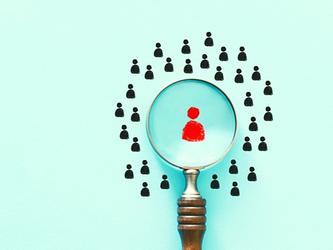Key takeaways from MRS Behavioural Science Summit
Virtual reality can influence behaviour
ITV and consumer research company Gorilla In The Room tried to connect the broadcaster to its viewers through the use of virtual and augmented reality. In an experiment, fans of Dancing on Ice and Who Wants To Be a Millionaire? were filmed watching the shows. Non-fans were then asked use a virtual reality (VR) headset to watch the groups of fans watching their favourite shows. The experiment was intended to replicate the experience of sitting in a group of friends or family members watching television together.
The research found that non-fans were able to forgive a show’s faults and enjoy watching if the general group experience is positive. Alastair Goode, cognitive scientist at Gorilla In The Room, said the experiment was like “Gogglebox on steroids”, and allowed the VR users to empathise with the other viewers.
“People stopped evaluating TV shows based on what the show was, and instead about a shared experience and interaction,” Goode said. “It went on to be about the social equity the shows were creating. We are part of groups, and want to reinforce those bonds through social interactions.”
Framing is vital
Crawford Hollingworth, founder of The Behavioural Architects, set out how framing techniques can be used to influence how people respond to questions. This could be either through positive framing – such as asking someone to do something in exchange for a reward – or negative framing, which involves telling people if they fail to do a particular action, they could miss out on these benefits.
For example, an anti-smoking campaign could tell people that giving up cigarettes will led to health benefits, or warn that failing to stop smoking will cause severe health issues in later life.
Framing has different impacts in different people, Hollingworth said: “If you change the frame, you change the meaning.” As an example, he explained that older people are more susceptible to positive framing, and that people will be more susceptible to framing devices generally if they have less time to make a decision.
Hollingworth criticised the use of behavioural science for exploiting the weaknesses and biases in consumers, a practice known as “sludging”. This could be intentional through techniques such as pressure selling, ‘sticky defaults’ that make it hard to change policy or product, or creating friction in application processes. In many cases, sludging can be unintentional, such as poor IT or time-consuming processes.
“With this growing awareness of misuse of power, lots of organisations and individuals are calling out ‘sludge’,” Hollingworth said. “I want you all to join the ‘sludge police’ – if you see it, call it out.”
Check out the ‘messy middle’
Alistair Rennie, research lead – search at Google, discussed a study of 310,000 simulated purchases, which shined a light on how shoppers buy goods, and the thought processes that go on in the background.
The study found that between the ‘trigger’ for a purchase and the completion of the transaction is a so-called ‘messy middle’. This involves a loop between evaluating and exploring an item, and can continue until a decision is made by the potential customer.
Google looked at how to use six biases to affect the thought processes in the ‘messy middle’, and encourage people to switch brands. The biases were: power of free; social norms; scarcity bias; power of now; authority bias; and category heuristics. When all six were used on a fictional brand, Google found that the majority of people were willing to switch products. This happened across a range of different products, from cereal to mortgages, and included real customers.
“Marketing history is littered with challenger brands who simply appeared overnight and took a significant share of the market,” Rennie said. “For challenger brands, these insights can really build the brand by affecting the messy middle.”
People look but do not always see
Liverpool is one of the UK’s worst cities for car accidents involving pedestrians. Insights firm So-Mo worked with Liverpool City Council to produce a heat map of the worst accident hotspots across the city, and identified some of the most dangerous pedestrian crossings outside the city centre.
The accidents at those crossings shared certain characteristics: they occurred in the daytime, they were on local high streets and they involved roads with two lanes of fast-moving traffic. But the research showed that very few accidents happened on the crossings themselves – they were pedestrians who had decided to cross the road at a different point.
“People are goal-orientated to get from A to B in the fastest time possible,” said Nicola Wass, chief executive of So-Mo. “The crossing might not be the best way of doing that. People were looking and not seeing the thing that was designed to keep them safe.”
So-Mo is testing a number of alternative crossings to provide a “better crossing experience”, and are conducting a similar experiment in Hull to ensure that the results are transferable to other cities. Trials will take place in 2021, with results expected to be published in 2022.

We hope you enjoyed this article.
Research Live is published by MRS.
The Market Research Society (MRS) exists to promote and protect the research sector, showcasing how research delivers impact for businesses and government.
Members of MRS enjoy many benefits including tailoured policy guidance, discounts on training and conferences, and access to member-only content.
For example, there's an archive of winning case studies from over a decade of MRS Awards.
Find out more about the benefits of joining MRS here.













0 Comments